Space Biofilms
Funding agency
NASA (80NSSC17K0036, 80NSSC21K1950)
Launch date
Bacterial Space Biofilms (1st flight): Launched on November, 2019 (NG-12). Returned to Earth on January 2020 (SpaceX-19)
Fungal Space Biofilms (2nd flight): Launched on February, 2022 (NG-17). Returned to Earth 2022.
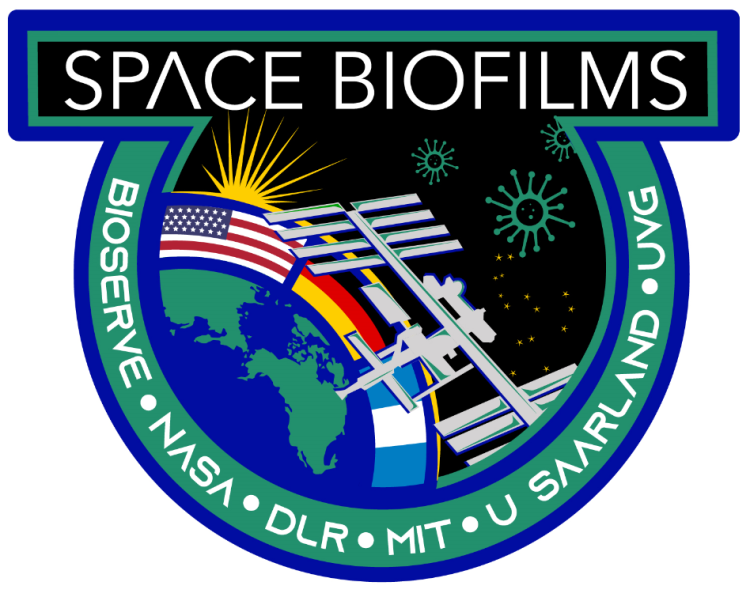
Biofilm growth has been observed in Soviet/Russian (Salyuts and Mir), American (Skylab), and International (ISS) Space Stations, sometimes jeopardizing key equipment like spacesuits, water recycling units, radiators, and navigation windows. Biofilm formation also increases the risk of human illnesses and therefore needs to be well understood to enable safe, long-duration, human space missions. The Space Biofilms project aims to characterize biofilm - bacterial and fungal - inside the International Space Station in a controlled fashion, assessing changes in mass, thickness, and morphology. These two space-based experiments also aims at elucidating the biomechanical and transcriptomic mechanisms involved in biofilm formation in space. To search for potential solutions, different materials and surface topologies are included as the substrata for microbial growth.
What are this project's objectives?
This project aims to characterize biofilm mass, thickness, morphology, and the associated gene expression using various spaceflight-relevant microbial species (one bacterial and one fungal) and different substrata materials. Additionally, this experiment has the aim of elucidating the biomechanical and transcriptomic mechanisms involved in biofilm formation in space. This project also aims to investigate the role of material surface topology on biofilm formation, as well as to test in space a novel lubricant-impregnated surface.
How was this done and what did we learn?
BioServe hardware is used to house different 1cm2 coupons of varying materials, including SS316, passivated SS316, Al6061, Silicone, Cellulose Membrane, etc. Pseudomonas aeruginosa and Penicillium rubens are the bacterial and fungal model organisms being used, respectively. Bacterial biofilms were grown in BioServe's Fluid Processing Appartus (FPA) contained in Group Activation Packs (GAP). Fungal biofilms (mold) will be grown in 24-Well Plates. The methodology and results are described in further detail in our peer-reviewed manuscripts (please see links to open-access papers at the bottom of this page).
The Team
The Space Biofilms team is composed of scientists, engineers, and undergraduate and graduate students from two national space agencies (NASA, German Aerospace Center (DLR)), four universities (University of Colorado, Boulder, Saarland University, the Massachusetts Institute of Technology (MIT), and Universidad del Valle de Guatemala (UVG)), and one research center (BioServe Space Technologies).
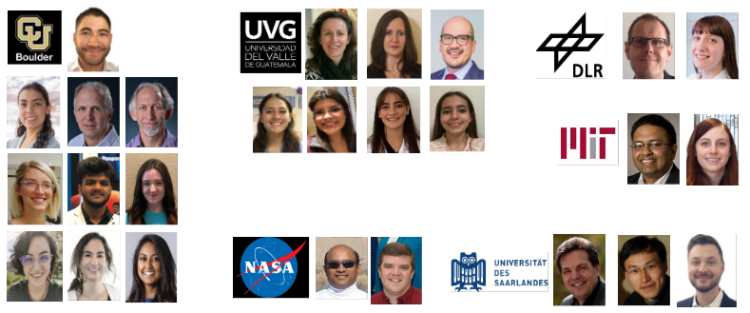
PI: Luis Zea, Ph.D.
Co-Is: Pamela Flores, Ph.D., Louis Stodieck, Ph.D., David Klaus, Ph.D., Ralf Moeller, Ph.D., and Frank Muecklich, Ph.D.
NASA Project Scientist: Sid Gorthi, Ph.D.and Shawn Reagan.
Students
The current and former students at the University of Colorado, Boulder (BioServe Space Technologies), German Aerospace Center (DLR), Saarland University, Massachusetts Institute of Technology (MIT), and Universidad del Valle de Guatemala (UVG) are the backbone of this project.
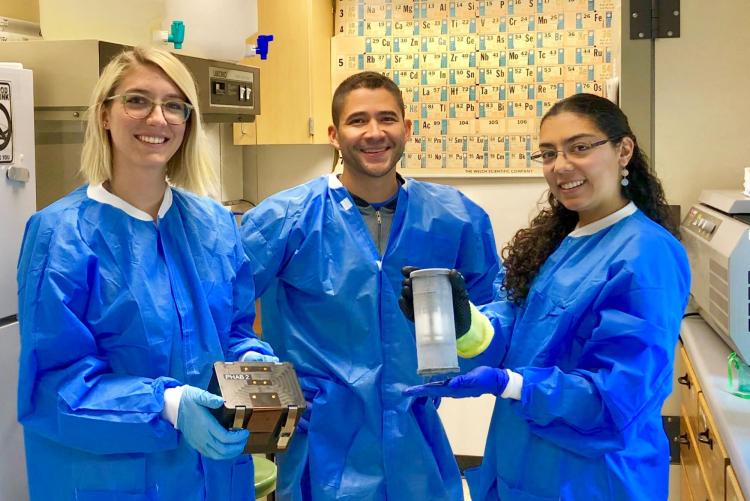
From left to right: Rylee Schauer (Fungal Experiment Development Lead) holding BioServe's PHAB, the hardware that will contain the fungal molds on ISS, Pamela Flores (Bacterial Experiment Development Lead, Data Acquisition and Analyses Lead, and Co-I) holding BioServe's Group Activation Pack (GAP) loaded with frozen bacterial samples, and Luis Zea.
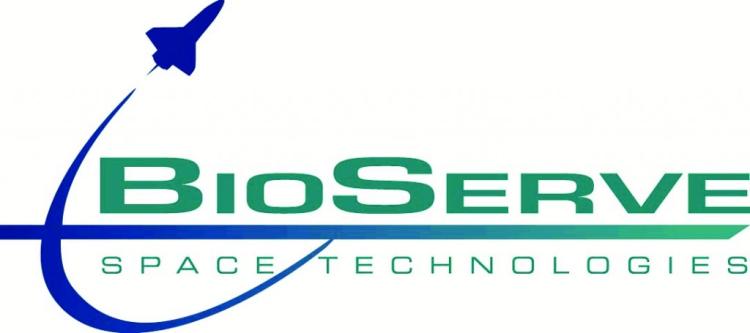

Pamela Flores - Pamela graduated with a B.S. in Biochemistry and Microbiology from Universidad del Valle de Guatemala and is currently pursuing a PhD. in Molecular, Cellular and Developmental Biology at CU. For the first flight, the bacterial experiment, she led the final stages of experiment design prior to launch, and was in charge of all post-flight data acquisition and analyses. For the second flight, the fungal experiment, she is leading the pre-launch preparation and integration, and she will lead data acquisition and analyses as part of her Ph.D. thesis and in her role as project Co-Investigator.
Previous students (graduated)
Rylee Schauer - Rylee Schauer holds a B.S in Chemical and Biological Engineering from University of Colorado, Boulder with a minor in Biomedical Engineering. She is currently pursuing a M.S. in Aerospace Engineering with a focus in Bioastronautics at CU Boulder. Rylee leads the fungal laboratory work of this project, performing ground tests with Penicillium Rubens to determine the spaceflight experimental protocol and preparing for launch.
Zeena Nisar - Zeena double-majored in Biochemistry and Molecular, Cellular, and Developmental Biology with a minor in English and a certificate in Public Health. She assisted on the preliminary ground testing of the bacteria with the material coupons.
Shilpi Ganguly - Shilpi recieved her B.S. in Biomedical Engineering with a second major in Spanish and minor in Aerospace Engineering from Washington University in St.Lous. She received her M.S. in Modern Human Anatomy from The University of Colorado Anschutz Medical Campus and based her Master's Thesis work on this project, namely on characterizing biofilm growth on silicone (same as used to make catheters).
Raj Kedia
Megan Hupka
Brooke Shepard

DLR students were supervised and guided by DLR's Prof. Dr. Ralf Moeller.
Previous students (graduated)
Marta Cortesão - Marta received her MSc degree in Molecular and Cellular Biology from FCUP (University of Porto), doing her MSc thesis at the Centre for Astrobiology (CAB) in Madrid. She is now a PhD student at the Space Microbiology Research Group at the German Aerospace Center (DLR) in Cologne (under the supervision of Dr. Ralf Möller), working on filamentous fungi adaptation to space conditions and their biotechnological applications. She loves astrobiology, education and science outreach. On the Space Biofilms project, she is characterizing biofilm formation of the fungus Penicillium rubens in simulated microgravity, helping the team define and set the upcoming ISS experiment!

MIT students were supervised and guided by MIT's Prof. Kripa Varanasi.
Previous students (graduated)
Samantha McBride is a PhD candidate in Mechanical Engineering at MIT where she is advised by Dr. Kripa Varanasi. She has a B.S. in Environmental Engineering and an M.S. in Chemical Engineering, and her lab experience includes water treatment, environmental transport, crystallization, self-assembly, and microgravity fluid mechanics. She has been involved with space science for 5 years and is currently the student president for the American Society of Gravitational and Space Research.
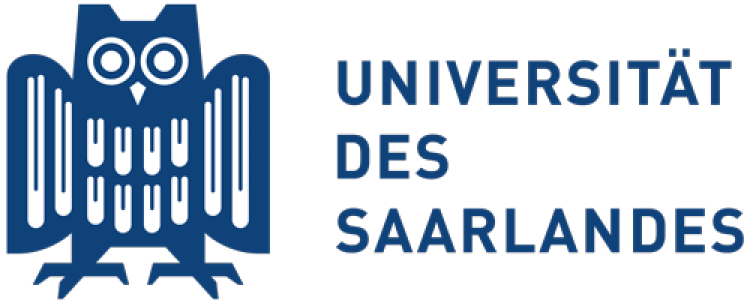
Saarland students were supervised and guided by Saarland's Prof. Dr. Frank Muecklich and Dr. Daniel Mueller.
Previous students (graduated)
Jiaqi Luo is a PhD student in Saarland University under supervision of Prof. Dr. Frank Mücklich, working on antibacterial surfaces and relevant surface techniques. He has received his Bachelor and Master degrees in Materials Science and Engineering from Central South University in China, where he was introduced to the surface science and coating techniques. In this current project, he is applying the method of Direct Laser Interference Patterning (DLIP) to produce surfaces with designed micro-topography.

UVG students are supervised and guided by UVG Professors Dr. Pamela Pennignton and Dr. Patrizia Lupo.
María Granados Presa - Maria is currently pursuing a B.S. in Biochemistry and Microbiology at Universidad del Valle de Guatemala. In this project, she aims to develop and validate a protocol for mycotoxin extraction, sample treatment and analysis on fungal samples sent to the space station to verify that it can be used in other future mycotoxin analyzes and to anticipate the fungal risks in future missions.
María Alejandra Barrientos Montepeque - Alejandra is studying a degree in molecular biotechnology at the Universidad del Valle de Guatemala, she is interested in biology applications for the pharmaceutical industry. In this project, she aims to characterize the effect of microgravity on peroxisome morphology to infer strategies to increase penicillin production.
Katherinne Herrera - Katherinne is working towards a B.S. in Biochemistry and Microbiology at Universidad del Valle de Guatemala and is passionate about bioastronautics. In this project, she is in charge of microscopy images of suspended P. aeruginosa, characterizing cell size and morphology differences between bacteria cultured in space and their Earth controls.
Ivanna Lopez
Produced Bibliography
Books
- Pathak, Y., Araújo dos Santos, M., Zea, L. Handbook of Space Pharmaceuticals. Springer International Publishing
Ph.D. Thesis
Flores, P. Effects of Spaceflight on Morphology and Gene Expression of Biofilms of Pseudomonas aeruginosa Grown over Different Spaceflight- and Medically-Relevant Materials. Thesis for the Degree of Doctor in Philosophy in Molecular, Cellular, and Developmental Biology, University of Colorado, Boulder, December 2022. (Mentor: Luis Zea, Ph.D.)
M.Sc. Thesis
- Ganguly, S., Characterization of Pseudomonas aeruginosa Growth Patterns Under Varying Gravitational Regimes, Capstone Thesis for the degree of Master of Science in Modern Human Anatomy, Anschutz Medical Campus, University of Colorado, Boulder, May 2018 (Capstone Mentor: Luis Zea, Ph.D.)
Undergraduate Honors Theses
Herrera-Jordan, Katherinne. Efectos de la variación de medios de cultivo y superficies de crecimiento en las dimensiones de células planctónicas de Pseudomonas aeruginosa, cultivadas en la Estación Espacial International comparadas con células cultivadas en gravedad terrestre. Universidad del Valle de Guatemala, September 2021.
Hupka, Megan. Penicillium rubens Biofilms Formed in Space on Seven Different Materials – Biomass, Surface Area, and Thickness Comparisons With Respect to Earth Controls. Undergraduate Honors Thesis in Molecular, Cellular, and Developmental Biology, University of Colorado Boulder. April 2023.
Barrientos, Maria Alejandra. Penicillium rubens as the first fungal model to study the effect of microgravity on penicillin production. Thesis for the Degree of Licentiate in Biotechnology, Universidad del Valle de Guatemala, January 2024.
Granados-Presa, Maria. Mycotoxins in Space: Detection of Ochratoxin A Produced by Penicillium rubens when Exposed to Microgravity According to the OD450 ELISA Method. Thesis for the Degree of Licentiate in Biochemistry and Microbiology, Universidad del Valle de Guatemala, December 2023.
Journal Articles
- Flores, P. Luo, J., Mueller, D.W., Muecklich, F., Zea, L. Space Biofilms – An Overview of the Morphology of Pseudomonas aeruginosa Biofilms Grown on Silicone and Cellulose Membranes on board the International Space Station,Biofilm, 100182; https://doi.org/10.1016/j.bioflm.2024.100182
- Herrera-Jordan, K., Pennington, P., Zea, L. Reduced Pseudomonas aeruginosa cell size observed on planktonic cultures grown in the International Space Station, Microorganisms 2024, 12(2), 393; https://doi.org/10.3390/microorganisms12020393
- Flores, P., McBride, S., Galazka, J., & Varanasi, K., Zea, L. (2023). Biofilm formation of Pseudomonas aeruginosa in spaceflight is minimized on Lubricant Impregnated Surfaces, npj Microgravity (2023) 9:66; https://doi.org/10.1038/s41526-023-00316-w
- Hupka, M., Kedia, R., Schauer, R., Shepard, B., Granados-Presa, M., Vande Hei, M., Flores, P., Zea, L. Morphology of Penicillium rubens Biofilms Formed in Space, Life 2023, 13(4), 1001; https://doi.org/10.3390/life13041001
- Flores, P., Schauer, R., McBride, S. A., Luo, J., Hoehn, C., Doraisingam, S., ... & Zea, L. (2022). Preparation for and performance of a Pseudomonas aeruginosa biofilm experiment on board the International Space Station. Acta Astronautica, 199, 386-400. https://doi.org/10.1016/j.actaastro.2022.07.015
- Zea, L., McLean, R. J., Rook, T. A., Angle, G., Carter, D. L., Delegard, A., ... & Nur, M. (2020). Potential Biofilm Control Strategies for Extended Spaceflight Missions. Biofilm, 100026.
- Zea, L., Nisar, Z., Rubin, P., Cortesão, M., Luo, J., McBride, S. A., Moeller, R., Klaus, D., Mueller, D., Varanasi, K., K., Muecklich, F., Stodieck, L. (2018). Design of a spaceflight biofilm experiment. Acta Astronautica 148 (294-300)
Conference Papers, Abstracts, Posters, STEM Outreach, & Podcasts
- Flores, P. Space Biology: Microgravity Effects on Biofilms and Potential Strategies to Control Biofilm Growth in Space. University of Kentucky William Maxwell Reed Seminar Series. September 1st, 2023. Lexington, Kentucky. (invited speaker)
- Flores, P. Journey of a Microbiology Experiment Sent to Space. Launching Space Biology Workshop. Speaker and Work Group Mentor. May 22-26, 2023. Boulder, Colorado. (invited speaker)
- Zea, L. and Flores, P. Preliminary results of the ISS-operated Pseudomonas aeruginosa ‘Space Biofilms’ experiment. Montana Biofilm Meeting. July 2022. Bozeman, Montana. (invited speaker)
- Herrera-Jordan, K., Zea, L. (2023) Cambios en el tamaño celular de bacterias planctónicas crecidas en el espacio, I Congreso Espacial Centroamericano, San José, Costa Rica, Septiembre 12-14, 2023
- Barrientos Montepeque, A., Pennington, P., Lupo, P., Flores, P., Zea, L., (2023) Penicillium rubens como modelo para estudiar el efecto de microgravedad sobre los peroxisomas, I Congreso Espacial Centroamericano, San José, Costa Rica, Septiembre 12-14, 2023
- Herrera-Jordan, K., Pennington, P., Zea, L. Reduced Pseudomonas aeruginosa cell size observed on planktonic cultures grown in the International Space Station, IAC-22,A2,7,x72548, 73rd International Astronautical Congress (IAC), Paris, France, 18-22 September 2022
- Flores, P. Luo, J., Mueller, D.W., Muecklich, F., Zea, L. Space Biofilms – An Overview of the Morphology of Pseudomonas aeruginosa Biofilms Grown on Silicone and Cellulose Membranes on board the International Space Station, IAC-22-A2.7.2, 73rd International Astronautical Congress (IAC), Paris, France, 18-22 September 2022
- Flores, P., Schauer, R., McBride, S., …, Zea, L. A Space Biofilms - Phenotypic and Transcriptomic Behavior of Pseudomonas aeruginosa Biofilms on board the International Space Station, American Society for Gravitational and Space Research (ASGSR) Conference, November 3-7, 2021
- Flores, P., Schauer, R., McBride, S. A., Luo, J., Cortesao, M., Hoen, C., Doraisingam, S., Widhalm, D., Chadha, J., Meyerson, H., Mitzak, E., Hurd, V., Selman, L., Vellone, M., Floyd, S., Tozer, S., Rupert, M., Gorti, S., Reagan, S., Zea, L. (2021, October 29). Preparation for and Performance of a Pseudomonas aeruginosa Biofilm Experiment On Board the International Space Station. IAC-21,A2,7,2,x65214, 72nd International Astronautical Congress (IAC) 2021, Dubai, United Arab Emirates
- Zea, L, & Jakosky, B., A View From Earth, Fiske Planetarium, Episode 8 - Life finds a Way - Or does it? July 2020 [Podcast] [Video]
- Flores P, Schauer R, McBride S, Luo J, Pennington P, Countryman S, Hoehn C, Vellone M, Doraisingam S, Floyd S, Rupert M, Klaus D, Varanasi KK, Muecklich F, Gorti S, Sato K, Moeller R, Stodieck L, Zea L. "Verification of the Design of a Bacterial Biofilm Experiment in Preparation for Spaceflight." 35th Annual Meeting of the American Society for Gravitational and Space Research (ASGSR), Denver CO, November 20-23, 2019.
- Schauer R, Flores P, Cortesão M, McBride SA, Frank G, Countryman S, Hoehn C, Vellone M, Doraisingam S, Floyd S, Rupert M, Klaus D, Varanasi KK, Moeller R, Sato K, Gorti S, Stodieck L, Zea L. "Verification of the Design of a Fungal Biofilm Experiment in Preparation for Spaceflight." 35th Annual Meeting of the American Society for Gravitational and Space Research (ASGSR), Denver CO, November 20-23, 2019.
- Schauer, R., Ganguly S., Nisar, Z., Cortesao, M., Moeller, R., Luo, J., Muecklich, F., McBride, S.A., Varanasi, K., Sato, K., Gorti, S., Klaus, D., Stodieck, L., Zea, L. (2018). Tests in Preparation for a Spaceflight Fungal and Bacterial Biofilm Experiment, 34th Annual Meeting of the American Society for Gravitational and Space Research (ASGSR), October 31-November 3, 2018, Washington, D.C (Oral presentation)
- Nisar, Z., Ganguly, S., Stodieck, L., Zea, L., Defining a Spaceflight Biofilm Experiment Through Comprehensive Assessment of Material, Media, and Hardware Biocompatibility, IAC-18,A2,7,14,x45464, 69th International Astronautical Congress, Bremen, Germany, 1-5 October 2018 (Oral presentation and conference paper)
- Cortesao, M., Rubin, P., Mucklich, F., Hellweg, C., Stodieck, L., Klaus, D., Moeller, R., Zea, L., Controlling Spaceflight Fungal Biofilms: the Search for Antimicrobial Surfaces, IAC-18,A2,7,15,x46729, 69th International Astronautical Congress, Bremen, Germany, 1-5 October 2018 (Oral presentation and conference paper)
- Cortesao, M., de Haas, A., Laue, M., Hemmersbach, R., Hellweg, C., Venkateswaran, K., Zea, L., Moeller, R., Fungi in space: Implications for astronaut health and planetary protection, EANA 2018, Berlin, Germany, 24-28 September 2018
- Cortesão, M., Luo, J., Müller, D., Nisar, Z., Rubin, P., Mücklich F., Hemmersbach, R., Hellweg, C.E., Zea, L., Moeller, R., Biofilm in Space (BFS): Designing a Spaceflight Experiment, 42nd COSPAR Scientific Assembly, Pasadena, CA, July 14-22, 2018 (Oral presentation) and Biofilms 8, Aarhus, Denmark, May 27-29, 2018 (Poster)
- Zea, L., Preparando un experimento de biopelículas microbianas a ser llevado a cabo en la Estación Espacial Internacional, CONVERCIENCIA, Guatemala City, Guatemala, July 23-27, 2018 (Abstract)
- Ganguly, S., Characterization of Pseudomonas aeruginosa Growth Patterns Under Varying Gravitational Regimes, Anshutz Medical Campus Master of Science in Modern Human Anatomy Capstone Presentation Sessions, University of Colorado, Denver, CO, April 17, 2018 (poster)
- Cortesão, M., Luo, J., Müller, D., Nisar, Z., Mücklich F., Hemmersbach, R., Hellweg, C.E., Zea, L., Moeller, R. Growth and Biofilm Formation of Penicillium chrysogenum in Simulated Microgravity, 12th conference of the VAAM special group Molecular Biology of Fungi, September 28-30, 2017 (poster) and American Society for Gravitational and Space Related Research (ASGSR), October 25-28, 2017 (poster)
- Zea, L., Luo, J., Moeller, R., Klaus, D., Mueller, D., Muecklich, F., Stodieck, L., Design of a Spaceflight Biofilm Experiment, 68th International Astronautical Congress (IAC), Adelaide, Australia, 25-29 September 2017, IAC-17.A1.6.8x36309, Sep-2017 (oral presentation and paper)
- Nisar, Z., Stodieck., L., Zea, L., Ground Testing of Biofilm Formation on Spaceflight-Relevant Materials, American Society for Gravitational and Space Research (ASGSR), Seattle, WA, October 24-28, 2017 (poster)
Links
NASA announcement: https://www.nasa.gov/feature/nasa-selects-16-proposals-for-materialslab-investigations-aboard-the-international-space
Marta Cortesao's Space Microbes Blog: https://spacemicrobes.com/

